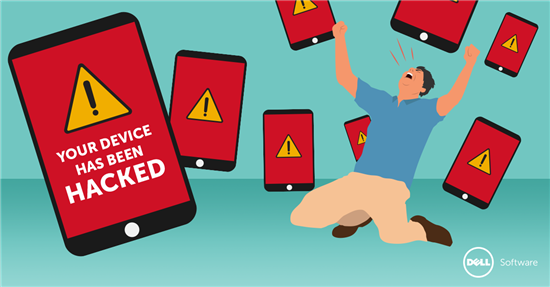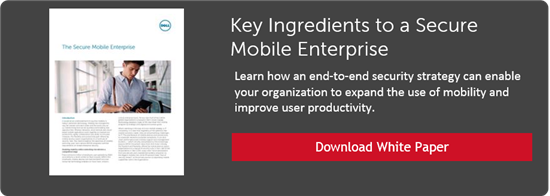In my two previous blogs, I’ve talked about two key requirements for any mobility program: secure mobile workspaces to enable BYOD and effective mobile device management to prevent data breaches on corporate-owned devices. As an IT professional, you might be saying, that all sounds great, but how am I supposed to deliver all that security with my complex IT environment and limited IT staff?
These concerns are completely valid.
Today’s mobile environments encompass a wide range of devices.
Your IT team is likely managing a large number of personally owned and corporate-owned smartphones, tablets and laptops, and dealing with multiple versions of both Apple iOS, Mac OS, Windows and Android operating systems. That complexity will only increase in the coming years. For example, a Dimensional Research survey sponsored by Dell found that most organizations expect both the number and variety of devices to continue to grow in the next few years.
Managing that growing complexity — no matter your IT staff’s experience and expertise — requires an effective window into your mobile infrastructure enterprise. While most IT organizations do use systems management tools (often three or more of them!), only about half say their tools can support all the platforms, operating systems and device types they must manage. That means systems management has moved beyond management of traditional computer endpoints and into a new world where “anypoint” systems management will be the imperative for securing and tracking virtually anything with a network connection.
A better approach is to manage all mobile devices, as well as their applications and content, from a single pane of glass. An overwhelming majority (89 percent) of organizations that lack such a consolidated view would like to have one. Let’s explore some of the key features of such a tool:
- Visibility — First, you need to know what’s out there. Confidence in visibility into corporate networks was always low, but now is measurably dropping. The Dimensional Research survey found that only 11 percent of organizations were confident they knew about all devices and applications on their corporate networks, down from an already low 16 percent just a year earlier. You need an effective way to discover and inventory all hardware and software network-wide, including laptops, desktops, servers, tablets, smartphones, Chromebooks, and network connected non-computing devices.
- Automation — Automation is also critical to ensuring that everyone gets the things that they need to do their jobs. You don’t want have to open up an IT trouble ticket every time a user needs the new version of Visio or PowerPoint; you want automated policy and application deployment to proactively provide users with the tools they need according to their roles and group memberships. You also need automated patch management (and a world-class patch library) to ensure that all devices are kept up to date. Similarly, you can’t afford to be bogged down with manual software license management; you need tools that streamline software inventory, license optimization and compliance reporting.
- Encryption — You also need a comprehensive encryption solution that enables you to enforce policies on devices enterprise-wide from a single administrative console. Look for a solution that can encrypt data at the file level so it can be controlled even if a user copies it to a cloud-based free file sharing site or a USB memory key.
- Flexibility — Finally, you need this single-pane-of-glass management tool to be mobile itself. Whether you’re in the office or on the go yourself, you need to be able to review and respond to real-time, mobile service desk notifications, examine inventory details, deploy software and more.
Learn more about building a secure mobile enterprise
Nearly every organization today wants to reap the benefits of modern mobile technologies — without sacrificing security or overwhelming IT. Secure mobile workspaces, effective MDM, and single-pane-of-glass management are critical components of a successful BYOD strategy. To learn more about achieving a secure mobile enterprise, read our whitepaper, “The Secure Mobile Enterprise.”





